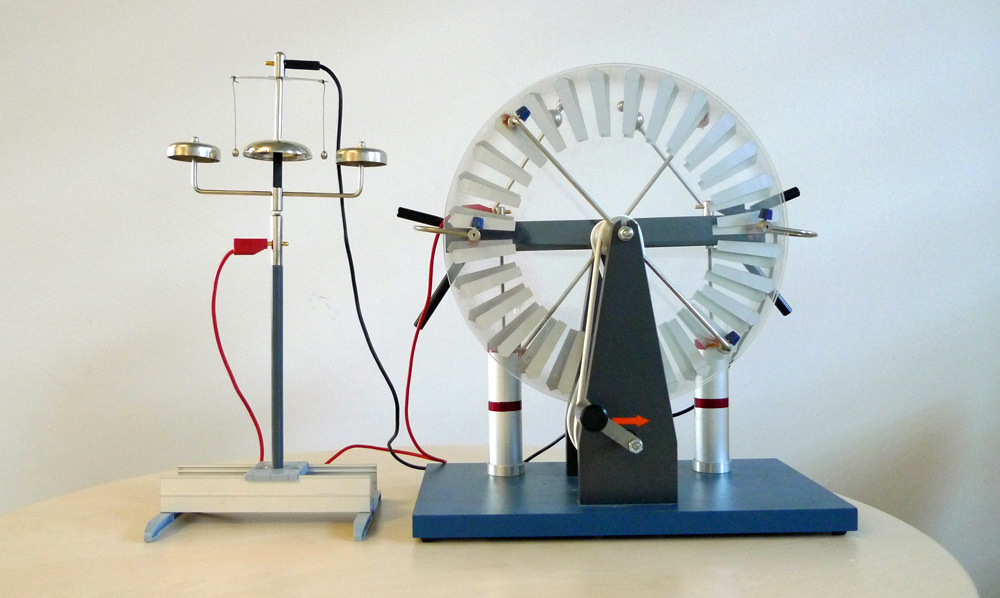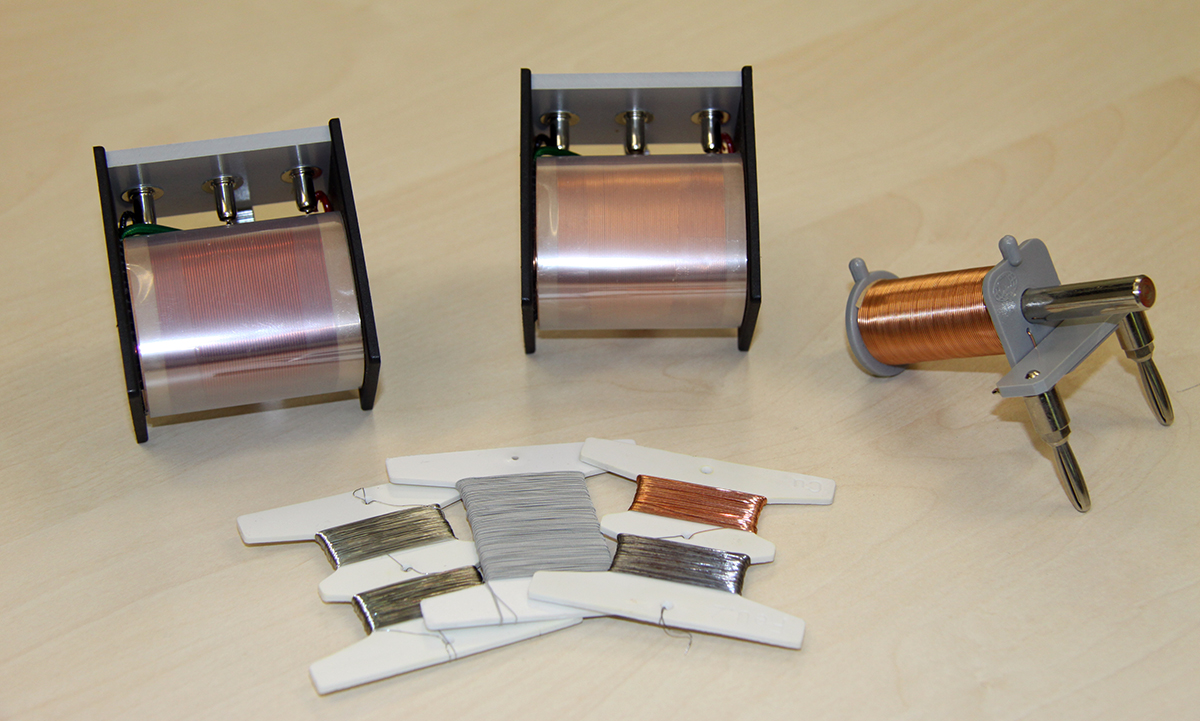This undergraduate course provides engineering students with a comprehensive introduction to the fundamentals and applications of electricity and magnetism. Topics include electrostatics, electric current, magnetism, electromagnetic induction, and electromagnetic waves. Lectures feature in-class experiments and problem-solving exercises to enhance learning. The companion textbook is “Physics for Scientists and Engineers.” The lectures are taught in English during the spring semester and in German during the winter semester.
Overview
Objectives and methodology
The lecture “Physics for Engineers: Electricity and Magnetism” given by Christian Bettstetter at the University of Klagenfurt conveys knowledge about the most important principles of electromagnetism from an engineering perspective.
It is structured into five main chapters:
Special emphasis is placed on helping students develop a good sense of physical phenomena and their interrelationships in the context of the theory of electromagnetism. Methods of higher mathematics are employed to formally describe and solve practical problems. Electromagnetism in nature and technology is illustrated using examples and experiments.
Course offering
The lectures introduce the contents and methods and discuss examples and experiments using a comprehensive set of slides complemented by handwriting. Recordings of lectures are available in German language.
The contents is deepened in exercise courses and tutorials through mathematical problem solving and additional experiments. A dedicated YouTube channel is available with videos of experiments and other material.
Schedule
The lecture takes place on 14 dates in the summer semester (beginning of March to end of June). The dates are weekly and on one to three additional dates. The lecture slots are three hours with a break in the middle. All dates can be found in the time table and in an iCalendar feed. The overall duration of lectures is about 32 hours (14 × 3 × 45 minutes).
Grading
The grade depends on a written final exam (100 minutes), where students demonstrate their skills and competences. The focus is on understanding and solving assignments, applying mathematical methods, and the ability to transfer the acquired skills to similar problems. Four exam dates are offered annually.
Related courses
A German-language version with the same contents is held in the winter semester. The lectures “Kinematics, Dynamics, and Thermodynamics” and “Electricity and Magnetism” form the module “Electrical Engineering and Physics.”
Requirements
Study programs and semester
This course is mandatory for students in the bachelor program “Robotics and Artificial Intelligence,” where it is recommended for the second semester. Students of the bachelor program “Informationstechnik” take the German-language version as a compulsory course. Some students of “Angewandte Informatik” and “Technische Mathematik” with an interest in physics or electrical and information engineering also attend the lectures.
Requirements in mathematics
Various mathematical methods are used to understand the subject area and to solve the exercises and examination tasks. In particular, vector and integral calculus in three-dimensional space are used.
Students are required to have basic skills from algebra and geometry, especially knowledge in vector calculus as well as differential and integral calculus of functions with one variable.
Line, area, and volume integrals in three-dimensional space will be introduced and practiced in the lectures and exercise courses. In addition, simple differential equations will be solved. It is recommended to attend “Analysis 2 for Engineers” in parallel.
Requirements in physics
Basic knowledge from school physics is expected, especially fundamentals of mechanics, but will be briefly reviewed at the beginning of the semester. Special knowledge in electrical engineering is not required.
Study material
Slides
The lecture notes consist of elaborate handouts (more than 600 slides). For didactical reasons, the texts and figures therein are incomplete and will be completed during lectures. Students are requested to bring printouts or tablets to do so, as the moderate writing furthers memorizing important terms and mathematical derivations while leaving enough time to follow the lecture.
Textbook
The book Physics for Scientists and Engineers by Douglas C. Giancoli is used as the primary accompanying book for this lecture. Chapters 21–32 cover most of the lecture contents and contain additional explanations and examples. The book is helpful for revising, deepening, practicing, and preparing for the exam. There is also a German edition. Both language versions are available as physical books in the university library. In addition, we provide access to the online version (Pearson e-book) if you are on the university campus network.
As in-depth literature, Wolfgang Demtröder’s book Electrodynamics and Optics is recommended. A more compact description is given in Gerthsen Physik (ed. Dieter Meschede). Also these books are available in the library.
Experiments
We show and discuss many experiments during the lectures and the exercise courses. Short videos of many of these experiments are available on our YouTube channel.
Lecture recordings
Almost all units of the corresponding German-taught lecture have been recorded and are available as screen and audio captures.
Equation sheet, symbols, sample exam
A collection of equations and a list of the physical quantities is available. The equation sheet can be used in the exam. To prepare for the exam, it is recommended to work through the sample exams provided.
Feedback from students
“An outstanding course overall. The professor puts tremendous effort into his slides, … explains how various concepts interrelate, offering us the bigger picture while also delving into the details, allowing us to see precisely where they fit in” (2024). “The professor was awesome, he made me interested even more in the science of the world.” “The dedication of the professor is great and you can see he really wants everybody to learn really well” (2023).
Lectures by Lewin
The lectures Electricity and Magnetism by Walter Lewin, available on YouTube, cover roughly the same contents mathematically on the same level. They provide elaborate explanations of physical phenomena and a vast number of experiments and mathematical derivations. Useful for repetition,
consolidation, or self-study.
Example topics
Examples for questions treated are: How fast does electric current flow in a wire? How do batteries work? Why is the Earth’s magnetic north pole actually in the south? What happens if a magnet is broken in two? How to generate electricity with help of a magnet? How does an MRI used for medical diagnosis work? How do cell phones produce radio waves? How big is a solar field to supply an entire city with energy? Which four equations can be used to describe electromagnetic phenomena? What is light?
Code of conduct
The Faculty of Technical Sciences implements a Code of Conduct for all degree programs. It describes the key points of respectful communication and scientific behavior.
Contents and Handouts
Prelude
Introduction and Overview
- Lecture contents
- Learning objectives
- Didactic concept
- Study material
- Exam
Material
Mathematical methods
- Elementary functions
- Basic Geometry
- Vectors and coordinate systems
- Differential calculus
- Integral calculus
- Simple differential equations
Material
Material in German
Some basics of physics
- General: quantities and units; orders of magnitude in nature; matter, vacuum
- Kinematics, dynamics: velocity, acceleration, motion types; force; work, energy; power
Material
- Lecture slides

- Video “Powers of Ten”
- Crash course Physics (Videos)
- How to use quantities, units, and equations

- Natural constants
Material in German
Chapter 1: Electrostatics
Contents
- Electric charge
- Forces between charges
- Electric field strength
- Work in the electric field
- Potential and voltage
- Continuous charge distributions
- Electric flux and enclosed charge
- Electric excitation
- Capacitance and capacitors
- Electrostatics in nature and technology
Material
Material in German
Chapter 2: Electric Current
Contents
- Electric current and current density
- Motion of charge carriers
- Resistance, resistors, and Ohm’s law
- Voltage and current sources
- Electric power
- Kirchhoff’s rules
- Circuits with sources and resistors
- Circuit with a source, a resistor, and a capacitor
Material
Material in German
Chapter 3: Magnetism
Contents
- Magnets and magnetics fields
- Force on a charge moving in a magnetic field
- Magnetic flux
- Magnetic excitation
- Magnetic field due to electric current
- Magnetic materials
- Magnetism in nature and technology
Material
Material in German
Supplementary material
Chapter 4: Electromagnetic Induction
Contents
- Can we generate electricity from magnetism?
- Laws of electromagnetic induction
- A changing magnetic field produces an electric field
- Inductance and inductors
- Circuits with inductors
- Applications of electromagnetic induction
Material
Material in German
Supplementary material
Chapter 5: Electromagnetic Waves
Contents
- A changing electric field produces a magnetic field
- Symmetric coupling between E and B
- Production of electromagnetic waves
- Characteristics of electromagnetic waves
- Electromagnetic waves in nature and technology
- Maxwell’s equations (in integral form)
- Outlook to modern physics
Material
Material in German
Exam preparation
Summary and repetition
The following video by Bob Eagle derives Maxwell’s equations. This will give you a review of the most important theoretical content and relationships of the entire semester in just under an hour.
The book A Student’s Guide to Maxwell’s Equations by Daniel Fleisch explains each of Maxwell’s equations step by step, basically repeating the semester contents in a reverse order, from end to beginning.
Sample exams
It is recommended to work through the following sample exam:
- February 2018: Electric field of a sphere; Real voltage source; Coil with resistor and capacitor; Magnetic field of a current-carrying conductor; Mixed questions
The solution to this exam is given in the video to the right. Additional sample exams are available in German language (Website). Solutions to all sample exams can be obtained from the teaching staff of the exercise courses but only upon presentation of one’s own attempted solution.
Electromagnetism beyond this lecture
Advanced textbooks on electromagnetism
Students wishing to deepen their knowledge and understanding of electromagnetism and delve deeper into theory (beyond the scope of this introductory course) should consider one of the following renowned physics textbooks:
- Electricity and Magnetism by Edward M. Purcell and David J. Morin
- The Feynman Lectures on Physics (Volume II) by Richard Feynman
The focus of both books is on theory and understanding. The mathematical methods are more advanced than in this lecture.






